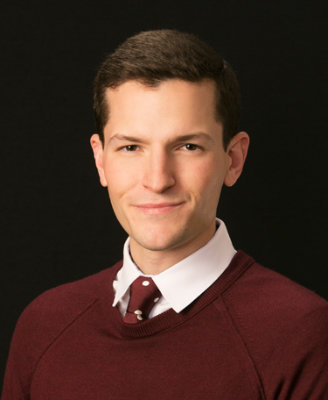In February 2007, Stephanie Lenz uploaded a 29-second video of her son dancing in her kitchen to the Prince song “Let’s Go Crazy” to YouTube. Universal Music Group, Prince’s publishing administrator responsible for enforcing his copyrights, objected to the otherwise-innocuous video, and sent YouTube a warning to remove the video, claiming that it constituted copyright infringement under the Digital Millennium Copyright Act (DMCA). Stephanie Lenz sued, arguing that Universal’s takedown request targeted permissible fair use, which generally permits the use of copyrighted material in limited conditions, such as when used in connection with criticism, parody, commentary or news reporting.
In September 2007 Prince announced plans to sue YouTube and other major web and music sites in an effort to “reclaim his art on the Internet” and stamp out unauthorized uses. Based on Prince’s statements and Universal’s support, Lenz alleged that Universal was issuing takedown notices in bad faith, essentially attempting to remove all Prince content rather than considering whether the targeted postings actually violated copyright, or were instead non-infringing “fair uses” under the DMCA. Lenz and her counsel at the Electronic Frontier Foundation (EFF) argued that Universal should have to pay under 17 USC 512(f), which penalizes copyright holders who request wrongful takedowns or misrepresent that material or activity is infringing. Up until this point, that provision of the DMCA has been enforced rarely, with courts awarding damages only where “no reasonable copyright holder could have believed that portions [of the targeted material] were protected by copyright.” See Online Policy Group v. Diebold, Inc., 337 F. Supp. 2d 1195, 1204 (N.D. Cal. 2004).
Over the past eight years the lawsuit, Lenz v. Universal – now better known as the “Dancing Baby” case – has become a test case over bad DMCA takedown requests, pitting copyright holders against critics who allege that some prominent rights-holders, like Universal, often abuse the takedown process at the expense of free expression.
Universal and similarly situated groups, like the Recording Industry Association of America (RIAA) and the Motion Picture Association of America (MPAA), have argued that requiring copyright holders to conduct what they characterize as fact-intensive fair use examinations of every posting would place an unreasonable burden on them and their rights. These groups argue that fair use is more appropriately considered as an affirmative defense as part of an infringement suit. During oral arguments in July, Universal’s lawyer argued that Congress fashioned the DMCA takedown procedure to provide a “rapid response mechanism” for the kind of massive online copyright infringement Congress knew was likely to occur online. That system, Universal’s lawyer argued, “simply can’t function if, as Ms. Lenz contends … every takedown notice must be preceded by some consideration of fair use.” With hundreds of hours of video uploaded to YouTube every minute, potential takedown notices for rights-holders could easily slip into the millions.
Internet service providers (ISPs) and intermediaries, like Google, Twitter and Tumblr, challenged that view, supporting Lenz.
In an opinion issued on September 14, 2015, the Ninth Circuit held that the DMCA requires copyright holders to consider fair use before sending a takedown notification. Failure to do so raises a triable issue as to whether the copyright holder formed a subjective good faith belief that the use was not authorized by law. The court noted that Lenz’s case “boils down to a question of whether copyright holders have been abusing the extrajudicial takedown procedures provided for in the DMCA by declining to first evaluate whether the content qualifies as fair use.”
Section 17 USC 512(c)(3)(A)(v) requires a takedown notification to include a “statement that the complaining party has a good faith belief that the use of the material in the manner complained of is not authorized by the copyright owner, its agent, or the law.” The parties disputed whether fair use is an authorization under the law as contemplated by the statute, with the Ninth Circuit ultimately deciding that the statute unambiguously contemplates fair use as a use authorized by the law. Specifically, “[f]air use is not just excused by the law, it is wholly authorized by the law.” In other words, the Ninth Circuit explained that fair use is non-infringing use from the beginning, rather than an affirmative defense that excuses otherwise infringing conduct, as Universal argued. The Supreme Court stated as much in its decision in Sony Corp. of Am. v. Universal City Studios, Inc. (1984) (the “Betamax case”), when it stated that “anyone who … makes a fair use of the work is not an infringer of the copyright with respect to such use.” Because 17 USC 107 expressly authorizes fair use, labeling it as an affirmative defense that excuses conduct is a misnomer. Because Universal and other similarly situated rights-holders must ordinarily give due consideration to other uses authorized by law, such as compulsory licenses, they must give consideration to fair use as well.
The court went further, however, noting that even if fair use was classified as an “affirmative defense” as Universal urged, that “for purposes of the DMCA … fair use is uniquely situated in copyright law so as to be treated differently than traditional affirmative defenses,” and the copyright holder must consider the existence of fair use before sending a takedown notification under 17 USC 512(c).
The court determined that a trial would be needed to determine whether Universal acted in good faith, however, stating that “Universal faces liability if it knowingly misrepresented in the takedown notification that it had formed a good faith belief the video was not authorized by the law, i.e., did not constitute fair use.” Lenz presented evidence that Universal did not form a subject belief at all because it did not consider fair use to begin with, whereas Universal argued that its procedures, while not formally labeled a consideration of fair use, were tantamount to such consideration. Because the DCMA requires consideration of fair use prior to sending a takedown notification, the Ninth Circuit noted, “a jury must determine whether Universal’s actions were sufficient to form a subjective good faith belief about the video’s fair use or lack thereof.”
The Ninth Circuit’s holding means that where a copyright holder forms a subjective good faith belief that the allegedly infringing material does not constitute fair use, after considering fair use before sending a takedown notification, then a court is in no position to dispute the copyright holder’s belief even if the court would have reached the opposite conclusion. Where a copyright holder evaluates fair use and still forms a subjective good faith belief that the material is infringing, the copyright holder does not violate 17 USC 512(f). The Ninth Circuit warned, however, that “[a] copyright holder who pays lip service to the consideration of fair use by claiming it formed a good faith belief when there is evidence to the contrary is still subject to 512(f) liability.”
In recognition of Universal’s position, however, and “mindful of the pressing crush of voluminous infringing content that copyright holders face in a digital age,” the court went on to note that a copyright holder’s consideration of fair use “need not be searching or intensive” or “require investigation of the allegedly infringing content.” The court did not go on to lay out the exact metes and bounds by which copyright holders might satisfy the requirement that they consider fair use, but noted that a computer algorithm, for example, might suffice and provide a valid and good faith middle ground for processing a plethora of content “while still meeting the DMCA’s requirements to somehow consider fair use.” Copyright holders could then employ individuals to review the minimal remaining content that a particular computer program does not cull. The Ninth Circuit held that it will be up to a jury as to whether or not Universal met that burden in this case.
The case will continue to be closely watched by those who believe that copyright law is often misused to silence criticism and chill online expression, and regardless of whether Lenz or Universal ultimately prevails, will have ramifications that extend far beyond Prince and the eight year old video of a dancing baby

![[IPWatchdog Logo]](https://ipwatchdog.com/wp-content/themes/IPWatchdog%20-%202023/assets/images/temp/logo-small@2x.png)


![[Advertisement]](https://ipwatchdog.com/wp-content/uploads/2024/04/Patent-Litigation-Masters-2024-sidebar-early-bird-ends-Apr-21-last-chance-700x500-1.jpg)

![[Advertisement]](https://ipwatchdog.com/wp-content/uploads/2021/12/WEBINAR-336-x-280-px.png)
![[Advertisement]](https://ipwatchdog.com/wp-content/uploads/2021/12/2021-Patent-Practice-on-Demand-recorded-Feb-2021-336-x-280.jpg)
![[Advertisement]](https://ipwatchdog.com/wp-content/uploads/2021/12/Ad-4-The-Invent-Patent-System™.png)






Join the Discussion
2 comments so far.
Anon
September 21, 2015 08:52 amPlease read the sentence “that suffers zero loss of quality from the duplicate to the original”
as
“that suffers zero loss of quality from the original to the duplicate”
(just goes to show just how interchangeable the two are, I suppose… 😉 )
Anon
September 21, 2015 08:46 amNice article.
I have always been troubled by actions in the copyright world that would effectively remove Fair Use.
Also in this camp: criminalizing the defeat of “lock-out” mechanisms. Laws passed that protect the removal of even the possibility of Fair Use under a “don’t tamper with the lock-out features” are effectively circumscribing and eliminating an avenue of use that while inconvenient for the rights holder in this digital age, nonetheless places that rights holder’s convenience above the existing law of allowable uses.
Yes, it is a “bummer” that opening up things to such Fair Use allows for the possible widespread digital duplication that suffers zero loss of quality from the duplicate to the original and is otherwise for all intents and purposes untraceable.
But the answer to that (no so) modern problem cannot be a loss of rights and a fundamental elephant-hiding-in-a-mouse-hole change.
Either the business model itself needs changing or a purposeful re-configuring of what a copyright means in the most basic instance needs to be undertaken.